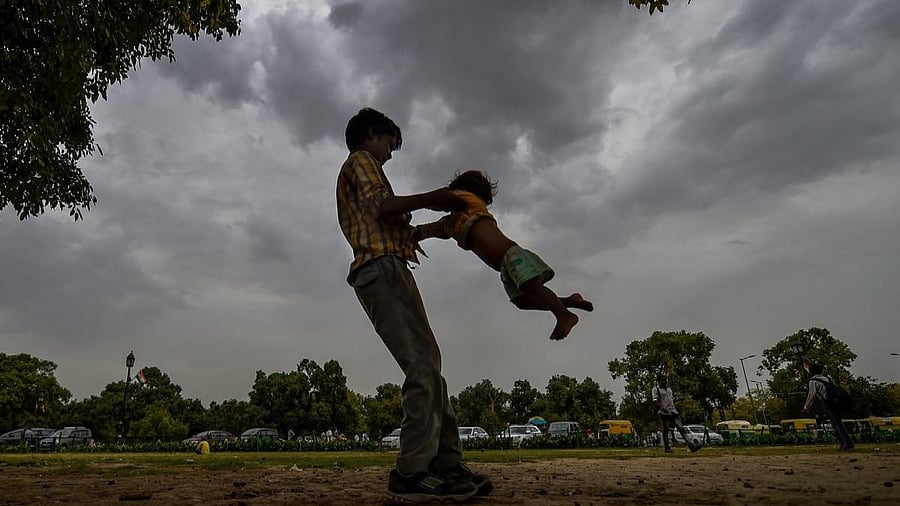
A young boy plays with a child as monsoon clouds gather in New Delhi
PTI
This year was the best monsoon year for the country since 2020, with the all-India weighted rainfall being 7.6% above the normal long period average (LPA) for the season. Most of the country’s 36 meteorological subdivisions received rains more than their LPAs and only seven registered significant shortfalls.
The monsoon was also temporally distributed fairly well. The higher rainfall pushed up acreages under most kharif crops and water levels in major reservoirs have risen to nearly 88% of full storage capacity, as against the 10-year-average of 77%. The expected bumper kharif crop is likely to further cut down the consumer food inflation.
July-August has already seen a fall in consumer food inflation which had reached high levels last year. The Met department has predicted above-normal rains in the coming months and a colder-than-usual winter. This may augur well for the coming rabi crop also.
While the monsoon was bountiful and its story has been generally good, it also hides some concerns. In the first place, there is no certainty that the overall performance would continue next year. The monsoon has been irregular and capricious for many years and this year’s good show may not be considered a rule.
Within the overall normal framework, extreme rainfall overwhelmed Delhi, Mumbai and some other cities and regions. These could not be predicted. Delhi one day recorded the highest rainfall since 1936. Kerala witnessed 13% rain deficiency and Wayanad experienced 30% rain shortage. But a part of Wayanad saw excessive rains which caused severe landslides that killed over 250 people and wiped out villages. The western and north-eastern parts of the country have witnessed considerable rain deficiency while the usually rain-deficit states of Gujarat and Rajasthan saw rainfall much above their LPAs.
The monsoon months saw another unusual phenomenon. They were also months of record temperatures in some areas. North-west India had the warmest June this year since record-keeping began in 1901. The country also saw its second-warmest July since 1901 in terms of mean temperatures, and the warmest July when it came to night-time temperatures.
It was also the warmest August in terms of night-time or minimum temperatures. What all this shows is that the monsoon has become much more complex. Its volatility and uncertainty, shifts in distribution and emergence of phenomena like heat waves in its midst might be the result of forces like climate change. The country and states need to be better prepared to counter them.
